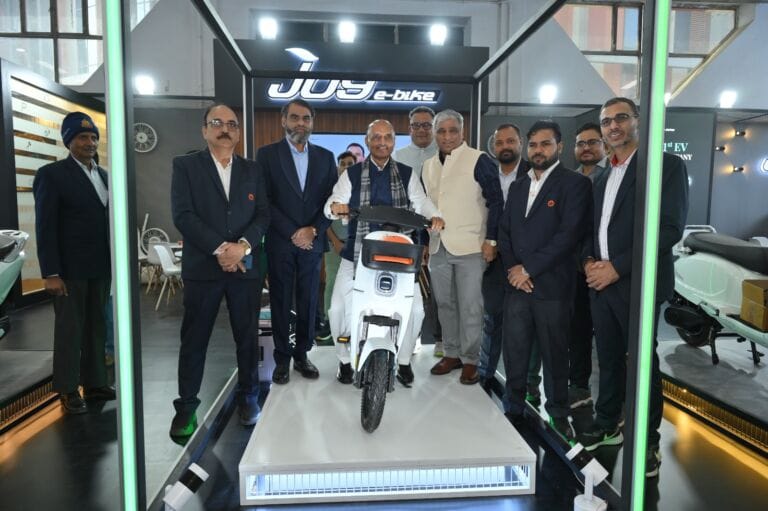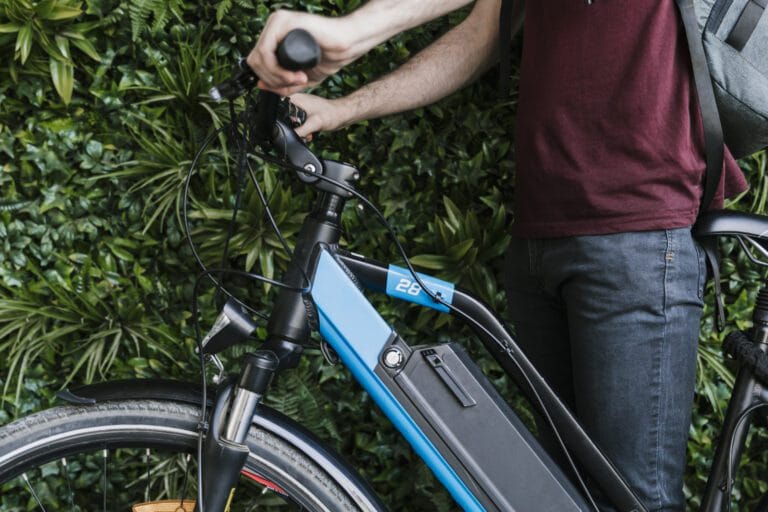
India’s EV Market 2026 Could Reach $17 Billion With Rapid Two-Wheeler Growth
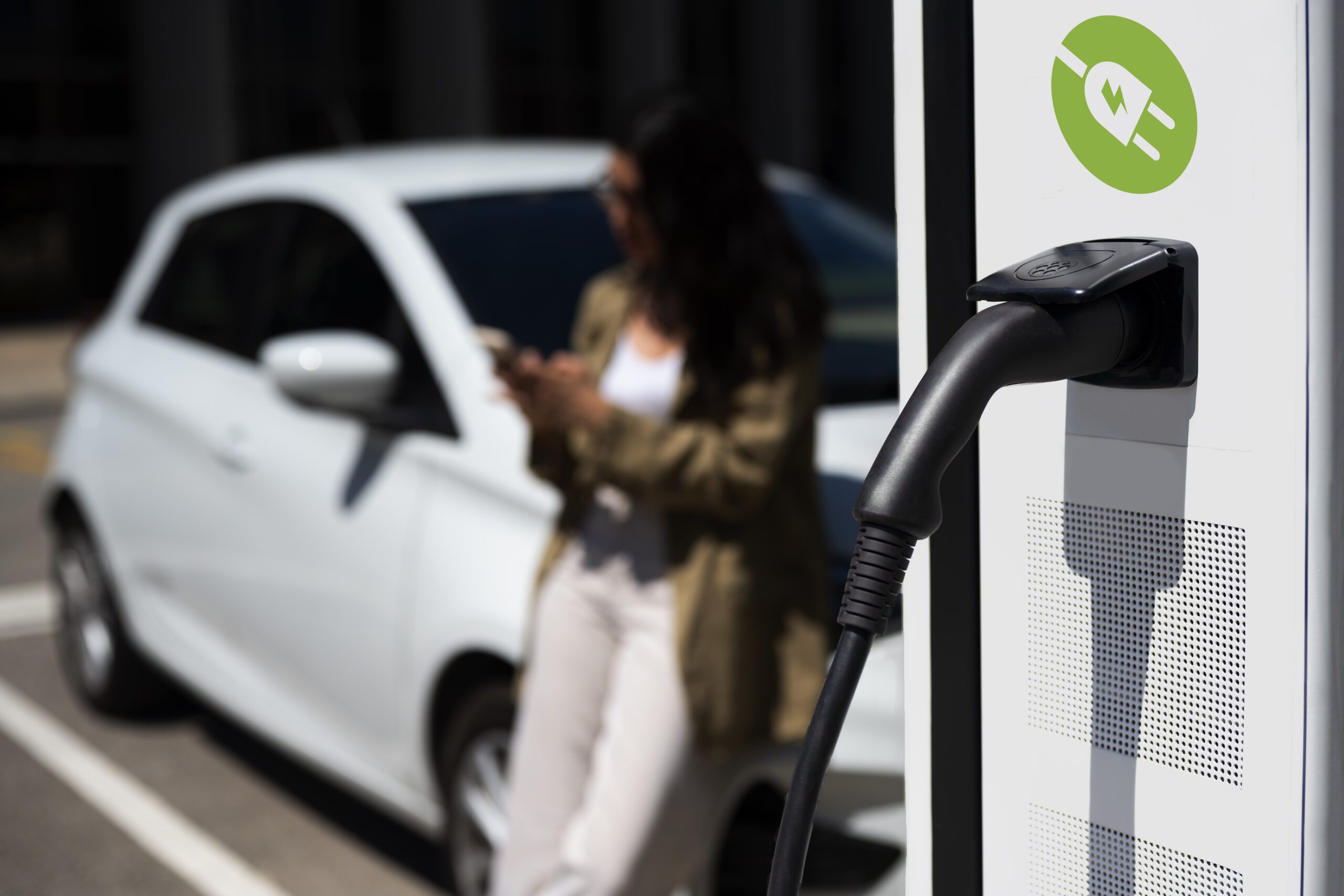
Table of Contents
India’s electric vehicle (EV) market is on the cusp of a transformative surge. Projected to reach $17.01 billion by 2026, the sector is poised for a remarkable compound annual growth rate (CAGR) of 23.47% from 2021 to 2026, according to StraitsResearch. This growth is predominantly driven by the accelerating adoption of electric two-wheelers, supported by favorable government policies, technological advancements, and a growing consumer shift towards sustainable mobility.
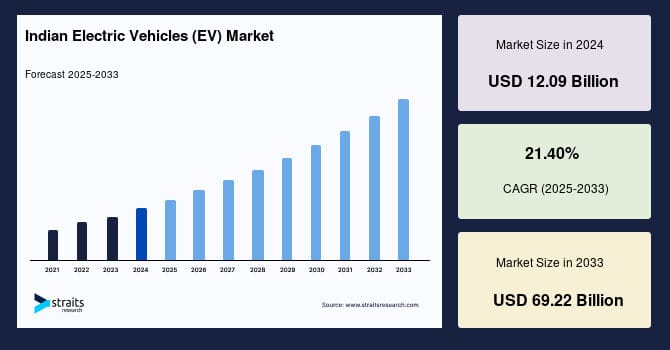
The country’s push toward reducing dependence on fossil fuels is already visible in the rapid expansion of EV sales. Government schemes like the Faster Adoption and Manufacturing of Hybrid and Electric Vehicles (FAME) II and the Production-Linked Incentive (PLI) Scheme for batteries and electric vehicle components are paving the way for widespread adoption.
Lets explore India’s EV market in 2026, examining growth forecasts, market trends, infrastructure requirements, and the opportunities these present for businesses and investors.
Current Snapshot of India’s EV Market
India’s EV sector, though relatively nascent, has witnessed significant progress in recent years. According to BloombergNEF’s Global EV Outlook, electric vehicle sales in India are accelerating, with two-wheelers leading the charge. In the first half of FY 2022-23, India recorded 277,910 electric two-wheelers sold, a 404% increase over the same period in 2021.
Electric cars also saw strong growth, with 18,142 units sold, reflecting a 268% rise compared to the previous year.
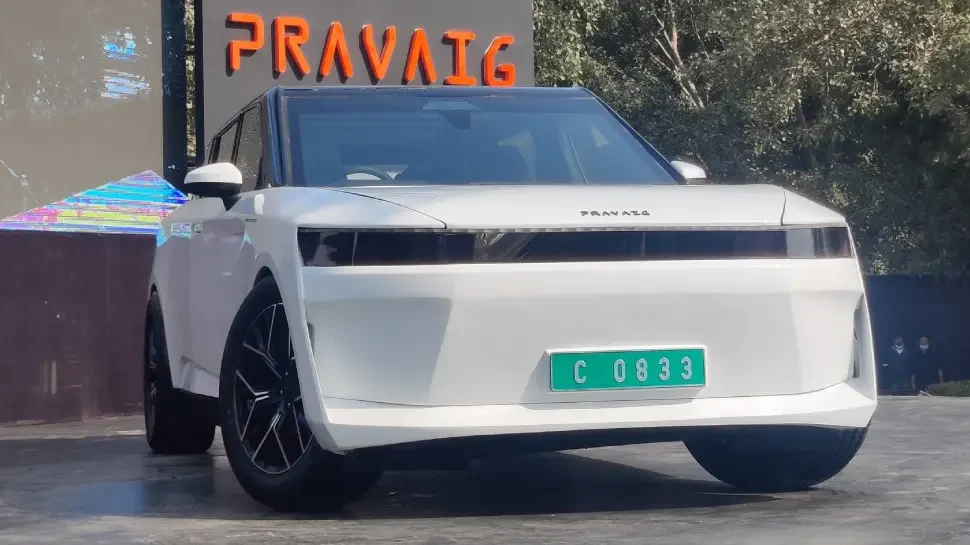
The battery segment is expanding alongside vehicle sales. Companies such as Amara Raja Batteries and startups like Pravaig are driving domestic battery production, reducing reliance on imports. Lithium-ion batteries, which constitute 35-40% of EV costs, are becoming increasingly affordable, improving overall EV economics.
Public EV charging infrastructure is another critical driver. The India Energy Storage Alliance (IESA) predicts charger deployment will increase from just over 1,000 units in 2018 to 50,000 units by 2026, reflecting an estimated investment of $520 million toward public EV charging points. This infrastructure expansion is vital to support the growing fleet of EVs in urban and semi-urban areas.
From the growing stage in 2018, when EV sales were 365,920 units with the battery market valued at $520 million, India’s EV sector is now on track to become a $17 billion market by 2026, fueled by government support and growing consumer adoption.
Government Policies Driving EV Adoption
India’s government has implemented multiple initiatives to accelerate EV adoption. Under FAME II, financial incentives support the purchase of electric vehicles and the deployment of public charging stations. The scheme has sanctioned 5,595 electric buses across 64 cities, enhancing intracity and intercity electric mobility.
The Production-Linked Incentive (PLI) Scheme for the automobile and drone industry further supports domestic manufacturing. It includes two components: the Champion OEM Incentive Scheme, targeting battery electric vehicles and hydrogen fuel cell vehicles, and the Component Champion Incentive Scheme, which focuses on advanced automotive technology components, including completely knocked down (CKD) kits, vehicle aggregates, and EV components for two-wheelers, three-wheelers, passenger vehicles, and commercial vehicles.
These policies aim to reduce dependency on imports, bring down costs for consumers, and make India a hub for domestic EV manufacturing. The combination of FAME II and PLI incentives is expected to have a profound impact on the industry by 2026, ensuring a steady pipeline of EVs and components produced locally.
The Surge of Electric Two-Wheelers
India’s two-wheeler segment is expected to dominate EV growth. According to BloombergNEF, electric two-wheeler sales could reach 2 million units by 2025, driven by urban commuters, delivery services, and shared mobility platforms.
Companies like Ola Electric, Ather Energy, and Hero Electric are leading this growth.
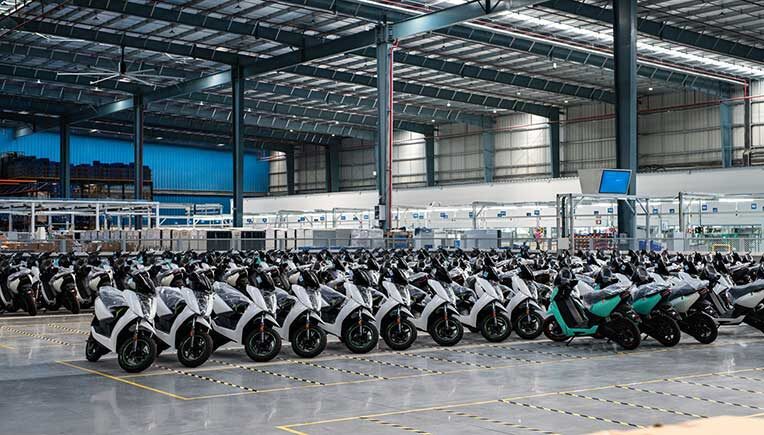
Ola’s electric scooter factory in Hosur is projected to produce 2 million units annually, while Ather Energy has expanded production to meet surging demand.
This trend is particularly significant because two-wheelers form the bulk of India’s personal mobility fleet, making their electrification crucial for achieving national carbon reduction targets.
Passenger and Commercial EVs
While two-wheelers lead adoption, the passenger and commercial EV segments are gaining traction.
Companies like Tata Motors, MG Motor India, and Mahindra Electric are increasingly producing electric cars and utility vehicles.
The government’s EV policies incentivise fleet electrification, including buses and last-mile delivery vehicles, which are important for reducing emissions in urban areas.
Electric buses are especially vital for reducing air pollution in densely populated cities. The FAME II scheme’s deployment of thousands of electric buses is an early example of how India is integrating EVs into public transport networks.
Charging Infrastructure and Battery Manufacturing
Scaling EV adoption requires robust charging networks. States like Karnataka, Andhra Pradesh, Uttar Pradesh, and Telangana are setting ambitious targets for public charging infrastructure. Private investments are also emerging, with companies establishing fast-charging stations and home-based charging solutions.

Battery manufacturing is another key focus. The PLI scheme for ACC battery storage encourages domestic production of high-capacity, energy-dense batteries and reduce depedning on importing.
As battery costs decline and production scales up, EV affordability will improve, making it easier for consumers and fleet operators to switch to electric mobility.
Challenges Ahead
Despite promising growth, the EV market faces several challenges:
- High upfront costs: Even with incentives, EVs remain costlier than internal combustion vehicles.
- Charging infrastructure gaps: Urban centers are better equipped than rural areas, limiting adoption outside cities.
- Battery supply chains: Dependence on imported lithium and cobalt can constrain production if domestic sources and recycling are not developed.
- Policy execution: Ambitious targets require coordinated implementation across states, utilities, and manufacturers.
Addressing these challenges is critical for achieving the 2030 target of 30% EV penetration in new vehicle sales.
Market Predictions for 2026
By 2026, India’s EV market is projected to grow exponentially:
- EV fleet: Expected to reach 7-8 million units, with two-wheelers comprising over 70% of the total.
- EV sales contribution: Electric vehicles could account for 10-15% of total new vehicle sales by 2026.
- Market value: Estimates suggest a market size of $17 billion, including vehicles, batteries, and charging infrastructure investments.
- Battery production: Domestic manufacturing capacity could exceed 20 GWh annually, supported by PLI schemes.
Government incentives, combined with decreasing battery costs and expanding infrastructure, will accelerate adoption, especially in metropolitan areas and high-density urban centers.
Business Opportunities and Investment Possibilities
India’s EV market is fertile ground for startups, investors, and sustainable businesses. Few sustainable startup ideas & opertunities include:
- EV component manufacturing: Batteries, motors, controllers, and power electronics.
- Charging infrastructure services: Public and private charging stations, fleet charging solutions.
- Fleet electrification: Delivery companies, ride-hailing services, and municipal fleets.
- Battery recycling and second-life solutions: Repurposing EV batteries for storage applications.
- Software and energy management platforms: Optimising EV charging, route planning, and energy use.
Early movers in these sectors can tap into domestic incentives while positioning for global partnerships as India becomes a leading EV market.
India’s EV market in 2026 presents a compelling growth story. Government policies like FAME II and the PLI Scheme, coupled with decreasing battery costs and expanding infrastructure, create a favourable environment for adoption. Two-wheelers will remain the dominant segment, but passenger vehicles, commercial EVs, and fleet electrification will also grow significantly.
While challenges like charging gaps, high upfront costs, and supply chain constraints remain, India’s potential for sustainable mobility and clean energy adoption is immense. With the right investments, technology innovations, and policy execution, India is on track to become one of the largest EV markets in the world, offering tremendous opportunities for businesses, investors, and startups in the green mobility ecosystem.

